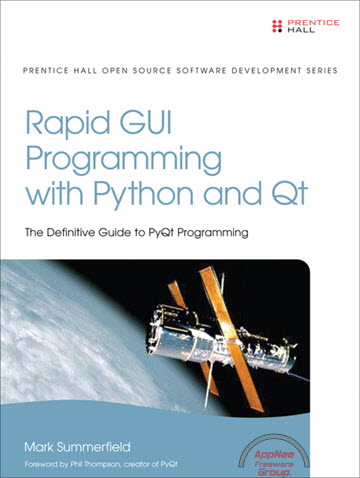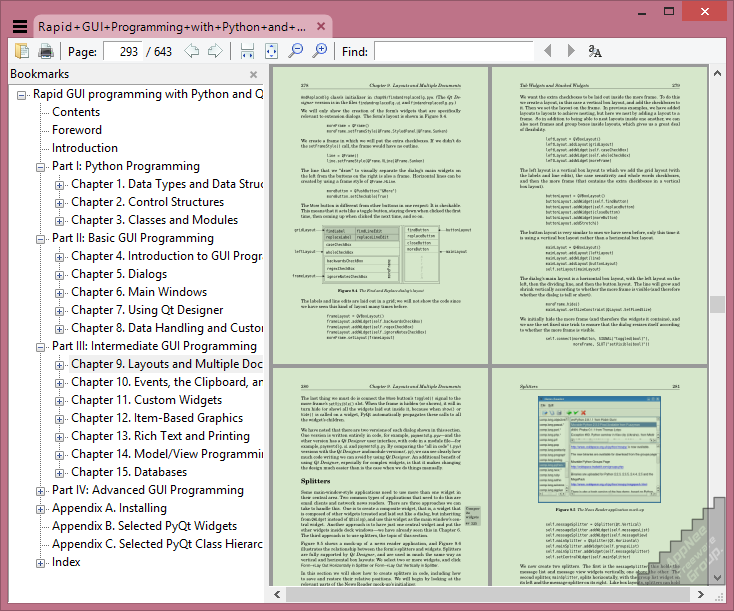
Many people feel very difficult when learning how to create a GUI application. One of the most important reasons is that they don't know where to start. In the search of PyQt relevant learning resources, I discovered this Rapid GUI Programming with Python and Qt. After a cursory glance at this book, I think it is very suitable for beginners who completely first contact with Qt and PyQt.
Rapid GUI Programming with Python and Qt is a definitive guide with best practices to PyQt programming, specially written for beginners who want to create GUI prototypes or full-featured and cross-platform GUI applications using the fast, easy and powerful PyQt toolkit (a Python binding of the cross-platform GUI toolkit Qt).
Rapid GUI Programming with Python and Qt focuses on the principles, methods and key technologies of using Python and Qt to develop GUI applications. The entire book is divided into four parts: the first part mainly describes the basic knowledge of Python; the second part gives a preliminary impression to the PyQt GUI applications through three examples; the third part goes deep into the layout of widgets, events handling, subclassing of widgets, Qt graphical framework, Qt model/view, etc.; the fourth part introduces the internationalization, networking, multithreading and more contents.

Table Of Contents
- Part I: Python Programming
- Chapter 1. Data Types and Data Structures
- Chapter 2. Control Structures
- Chapter 3. Classes and Modules
- Part II: Basic GUI Programming
- Chapter 4. Introduction to GUI Programming
- Chapter 5. Dialogs
- Chapter 6. Main Windows
- Chapter 7. Using Qt Designer
- Chapter 8. Custom File Formats
- Part III: Intermediate GUI Programming
- Chapter 9. Layouts and Multiple Documents
- Chapter 10. Events, the Clipboard, and Drag & Drop
- Chapter 11. Custom Widgets
- Chapter 12. Graphics (this chapter is devoted to the graphics view architecture introduced with Qt 4.2)
- Chapter 13. Rich Text
- Chapter 14. Model/View Programming
- Chapter 15. Databases
- Part IV: Advanced GUI Programming
- Chapter 16. Advanced Model/View Programming
- Chapter 17. Internationalization
- Chapter 18. Networking
- Chapter 19. Multithreading
- Appendix A: Installing Python, PyQt, and the Qt Libraries on Windows, Mac OS X, and X11-based Unices including Linux
- Appendix B: Selected PyQt Widgets
- Appendix C: Selected PyQt Class Hierarchies
Book Example Codes
Download URLs
| Format | Download | Size |
 |
5.39 MB |